At thruuu, we have published several listicles to grow our organic traffic and sign-ups.
Here are a few graphs that inspire us to create more.
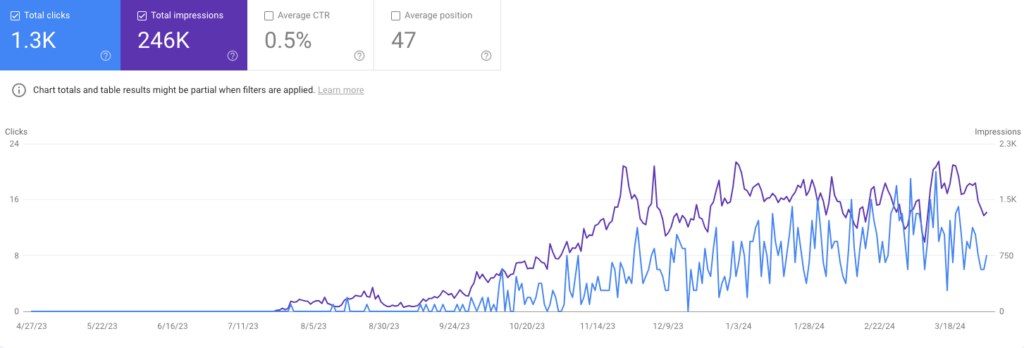
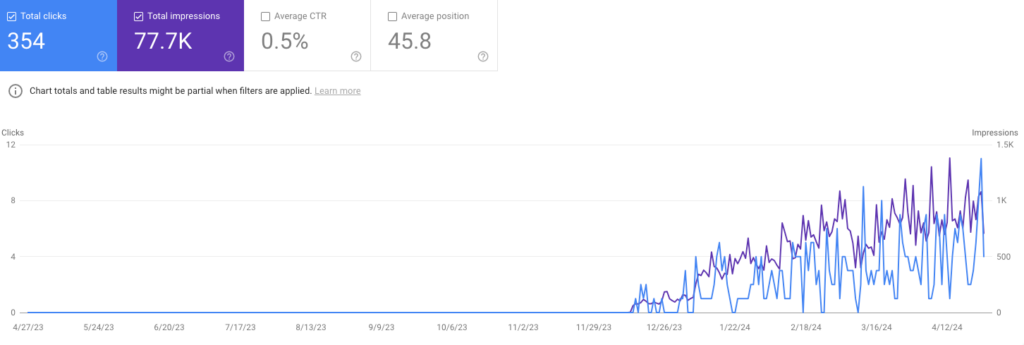
List articles are a great content format for B2B and SaaS with the potential to transform content into a lead-generation powerhouse.
Curious about how to create listicles that make your readers come back for more?
In this article, we’ll:
- Discuss the tips for writing the best listicle outline
- Share listicle outline examples and templates you can easily replicate
- Analyze the best SEO tool to create a listicle outline
- Consider successful B2B listicles
Let’s get started!
Table of Contents
What Are Listicles?
Listicles (or list posts) are articles structured as numbered or bullet-pointed lists that make information easy to read, understand, and share.
This content type is created as a list with a clear title accompanied by a few paragraphs of explanation to help the readers understand why it matters.
Here’s a good example from our listicle of the top five search intent tools you must try.
We formatted each tool as a heading and summarized its unique features in a few sentences.
We also explained why each tool made the list and how to use them.
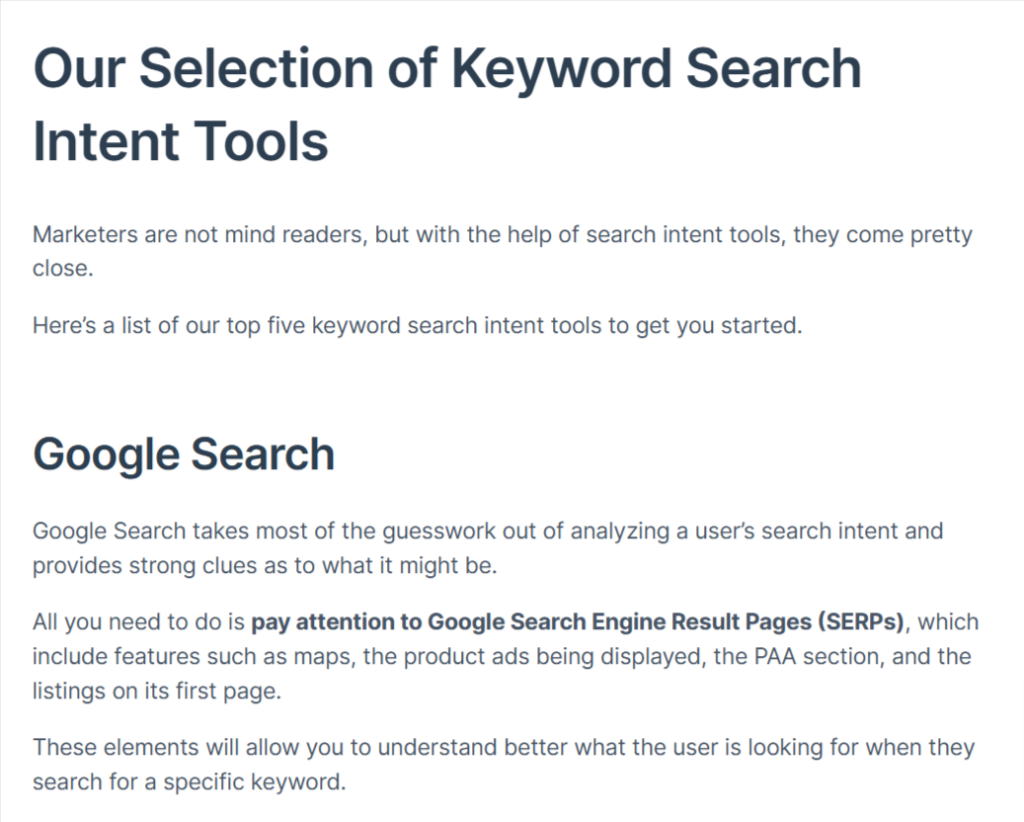
Despite different studies validating that people love reading articles in list formats, some site owners still believe listicles are only suited for light topics.
That’s a fact that is obsolete in this age!
Listicles are among the best content formats for serious fields like academia, technical B2B, and more.
They help you present complex information in simple, easy-to-scan, and numbered sections the readers’ brains can easily conceptualize and understand.
They can cover all topics, from academic content on Superprof, like “10 Maths Equations and Formulas that Changed the World,” to scientific research posts on Smithsonian magazine, like “The Top 10 Scientific Discoveries of the Decade.”
Let’s see more reasons why list articles are worth considering.
Why we Love Listicles for our B2B SaaS Blog?
46% of our blog posts in the last 12 months have been listicles.
We know their potential, and we create as many as possible.
Here are a few reasons why we love listicles:
Easy to Create and Share With a Writer
A list post is easier to write than other content formats, such as a detailed guide, statistical posts, or white papers.
We create an outline featuring the list of items to cover with our tool (more on this later), and our writer fills the blank with relevant explanatory information.
Most information is often already available, especially for “best tools” listicles.
Our writer does in-depth research about the tools’ uniqueness, analyzes their functions for different use cases, tests them, and checks customers’ reviews.
Good for our Audience and SEO
Our audience consists of SEO strategists, agencies, and SaaS companies looking to streamline their content creation processes.
To achieve this, they need the best content optimization tools and strategies.
That’s why we prioritize listicles!
List articles are the top content format on our blog page, generating the highest organic traffic and conversion.
Our list of the 10 essential free content writing tools for SEO ranked on Google’s first page in less than six months.

It has also generated mind-blowing traffic to our site.

We created another listicle on the Best Keyword Search Intent Tools in 2025, currently ranking on Google’s first page.

We can go on and on with an endless list of jaw-dropping results from our listicles.
Listicles tend to have more clicks. There is a defined expectation of what to expect, assurance of scan-ability, and a variety of information that triggers clicks on SERPs.
What else?
Boosting Readability and User Engagement
It’s no news again that people are in a hurry to get what they want. The average human attention span is down to 8.25 seconds.
People love posts whose content is easy to skim, consume, and share. That’s why content in list formats receives the most social shares and engagements.
Enhances SEO Performance
Google displays listicles in its ordered list featured snippets and answers to questions in its People Also Ask sections.
Interestingly, if a featured snippet appears on a search result, 42.9% of clicks go to it. That means you increase your site’s CTR by creating quality listicles and getting featured on SERP features.
For instance, we ranked on Google’s featured snippet for our listicle on The Top 5 PAA Scraper Tools for SEO Experts.
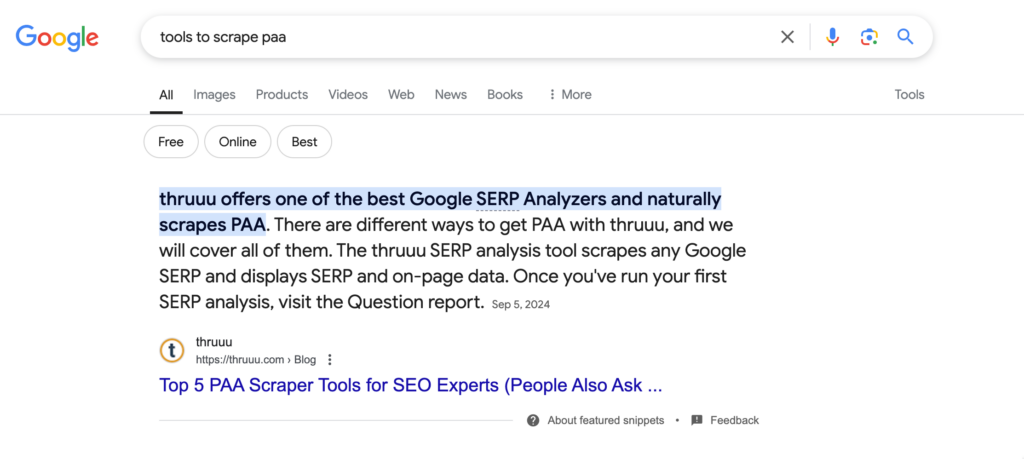
Securing a spot on this SERP feature increased the page’s impressions and clicks.
Also, with the evolution of generative AI in search results, search engines like Google and Bing extract content from listicles for their ordered list AI overview results and add a link to the site.
Are Good for Repurposing
List posts are like a gift that keeps giving.
You can repurpose a listicle into social media posts, infographics, explainer videos, slide presentations, detailed blogs, newsletters, email series, podcast episodes, quizzes, and more.
This strategy helps you cater to different audience preferences and increase your web authority on a topic.
Easy to Outline
With a good SERP analysis and template, a listicle outline can be easily created.
The primary focus is the list items, so there is less work to be done than other content format outlines.
We will show you later on how our AI outline generator creates different content format outlines including listicles.
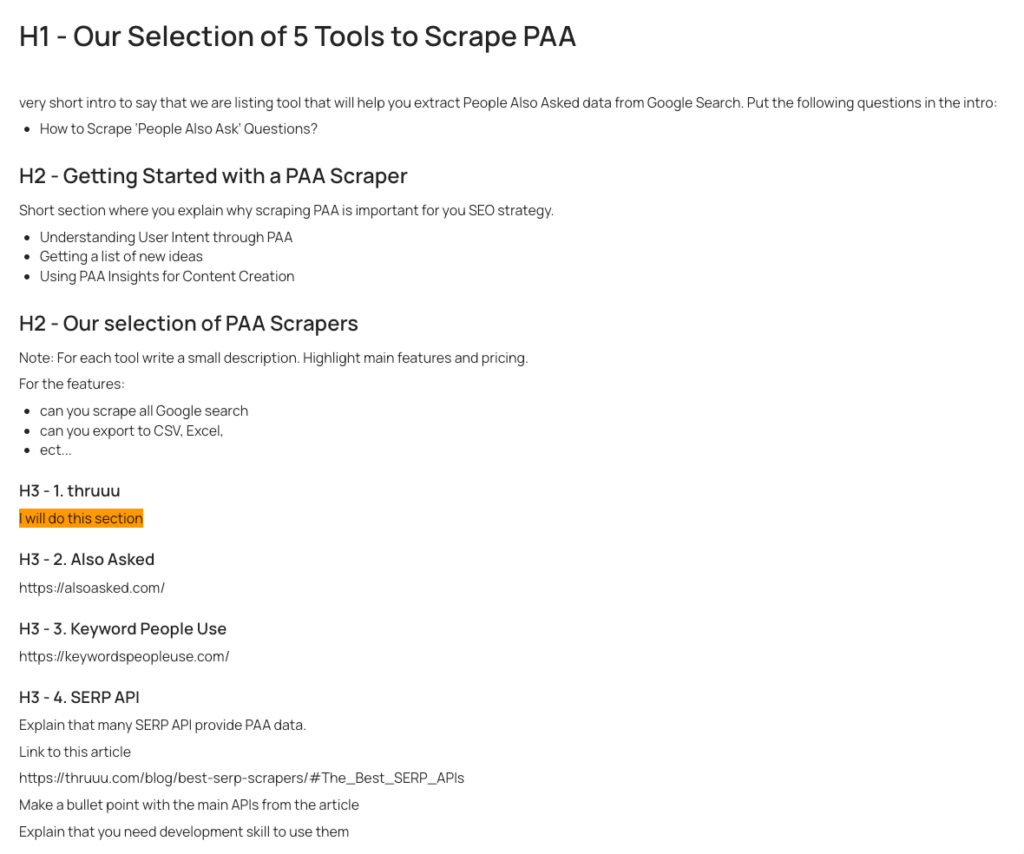
Tips to Write the Best Listicle Outline
The foundation of a great listicle is the quality of its outline.
Our writers create list posts that drive traffic because much work is done in the outline.
Let’s see how to create a listicle outline that produces a listicle that ranks and converts.
Choosing the Right Listicle Topic
Get this straight — not all topics fit a list format!
Any topic whose information cannot be easily sorted into a list cannot work as a list post. For example, deep narratives, analysis, and more don’t naturally work as a list.
For instance, an article on “The Big Bang Theory” cannot work as a list because of the complexity of the topic and the demand for detailed information.
Conversely, how-to guides, best-of articles, checklists, facts, comparisons, common mistakes, or topics that list examples or tips are perfect as a listicle.
See some examples from our blog:
Here are other ways to find the right listicle topics:
Analyze Search Engine Result Pages
Perform a Google search for your target keyword to see the content formats of top-ranking pages.
Suppose most ranking pages are listicles; that’s a sign that searchers are looking for content in list formats on that topic.
For example, see the SERP for “What is topic cluster?”
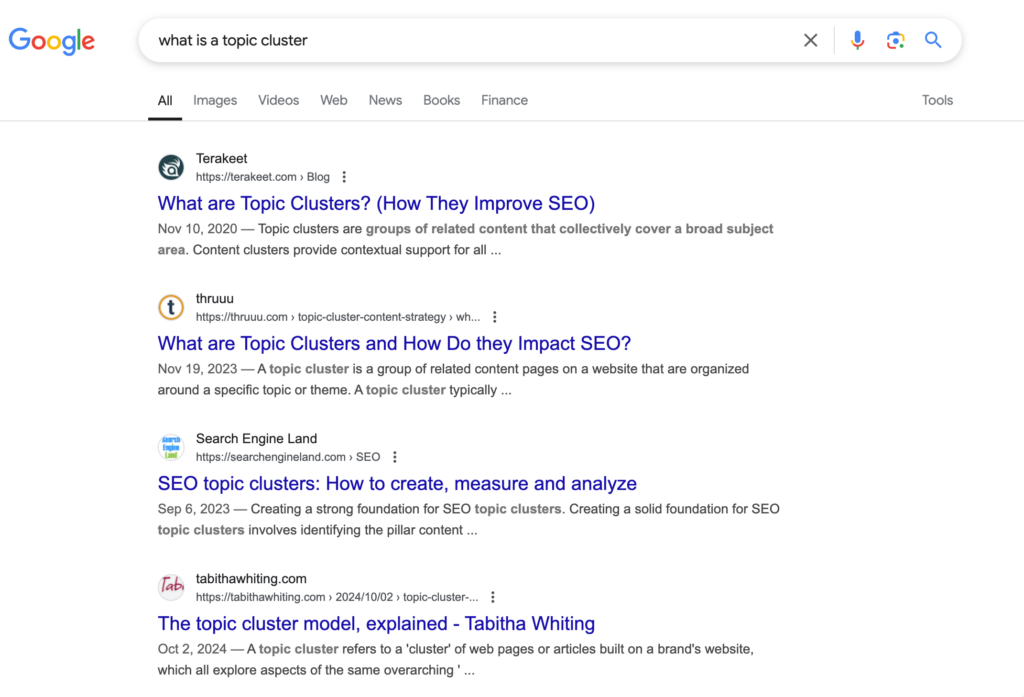
None of the ranking pages are list posts, which shows that the topic isn’t perfect for a listicle.
See another result page on “best free content optimization tools.”
Without any doubt, this is a listicle topic because all the ranking pages are list posts.

Use Trend Monitoring Tools
Google Trends helps you identify trending topics and ideas that can inspire timely listicles.
Buzzsumo also discovers high-performing content and trends across social media platforms and can filter the results only to list posts.
Crafting an Eye-Catching Title
The quality of your title determines the chances of your page being clicked on search result pages.
Although click-through rates aren’t a ranking factor, but they determine your page’s organic traffic.
You don’t want to create content that ranks on SERPs, but you want those golden clicks that turn into conversions from users.
Then, use a compelling headline!
Note: We aren’t talking about clickbait titles here; they do more harm than good. Clickbait headlines intrigue searchers’ emotions but let them down at the end of the day.
A listicle title should be descriptive and tell the readers what they will learn in the article.
You can spice things up by adding a number to your title.
Listicles titles front-loaded with a number are proven to get more clicks than the ones without a number.
For example, Anyword ran ads for some of its listicle posts. They discovered that posts with numbers in their headlines performed better. In fact, one of these posts saw an 8X increase in click-through rate.
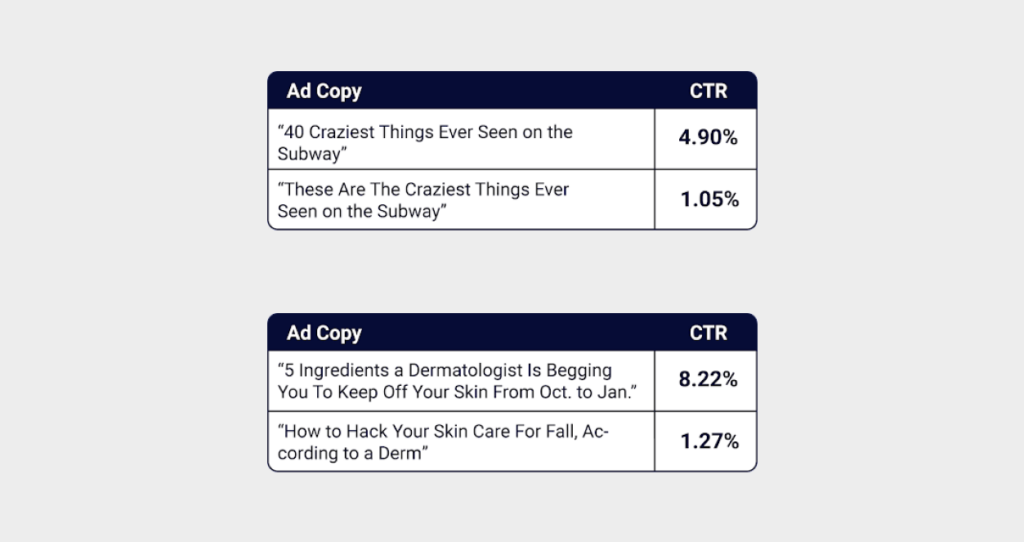
See how we also naturally use different compelling title formats for our listicles.
Not all of our list article headlines have a number, but they all inform the reader of what is in store for them.
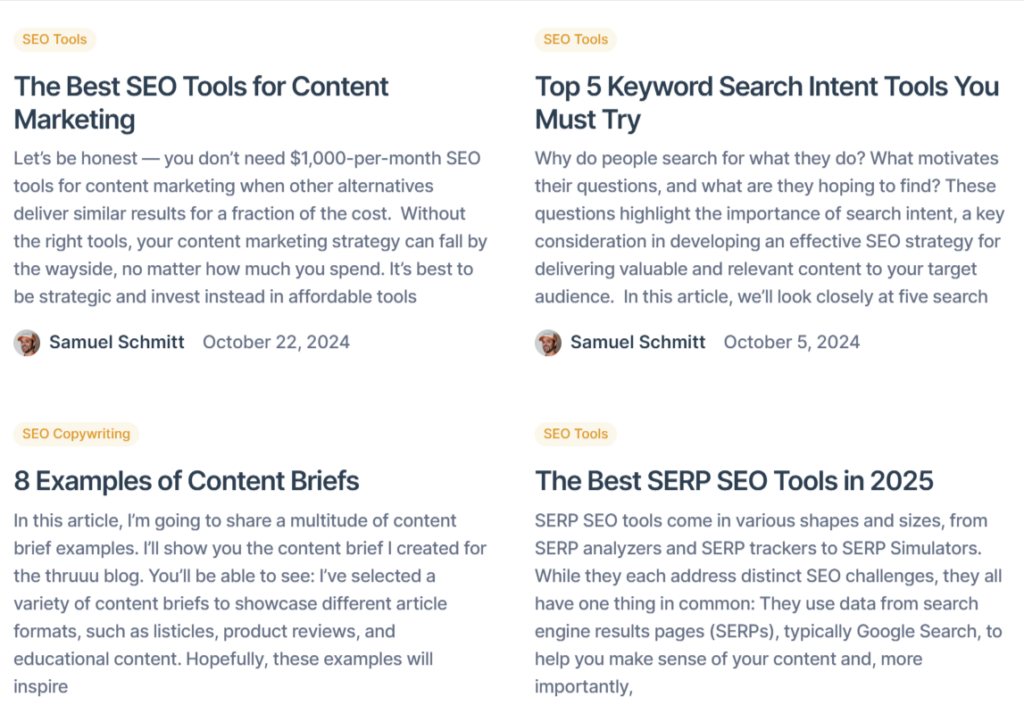
That’s why most of our listicles have amazing clicks like this one.

Find a Differentiator in Your Title
We wanted to rank for the keyword “content writing tools for SEO.” But we knew we had to be unique to build real estate on search results for that keyword.
Rather than focusing on just the best content writing tools for SEO, we tilted our gear and covered the top “free content writing tools for SEO.”
Guess what?
That strategy increased our search visibility.
We now rank on Google’s first page for “free content writing tools for SEO.”
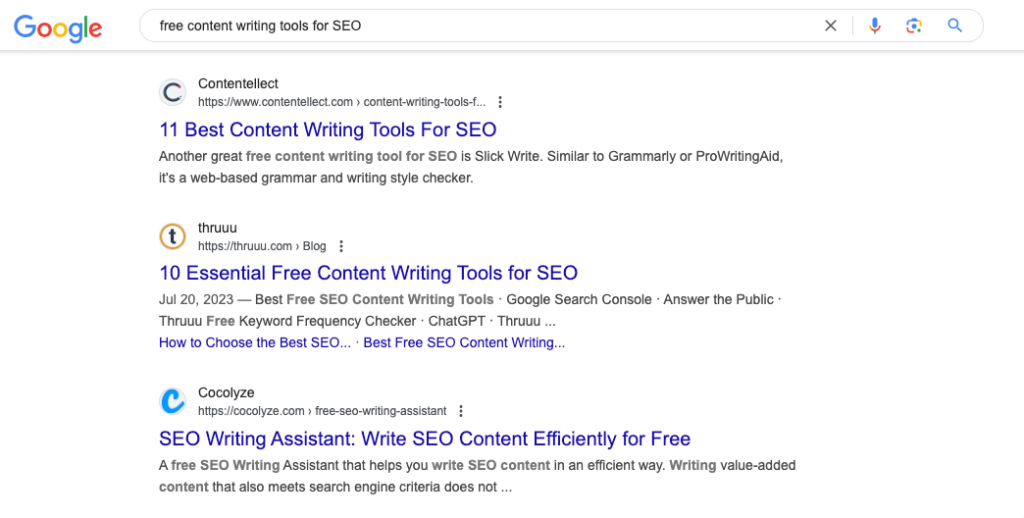
We also rank #5 on Google’s first page for “content writing tools for SEO.”
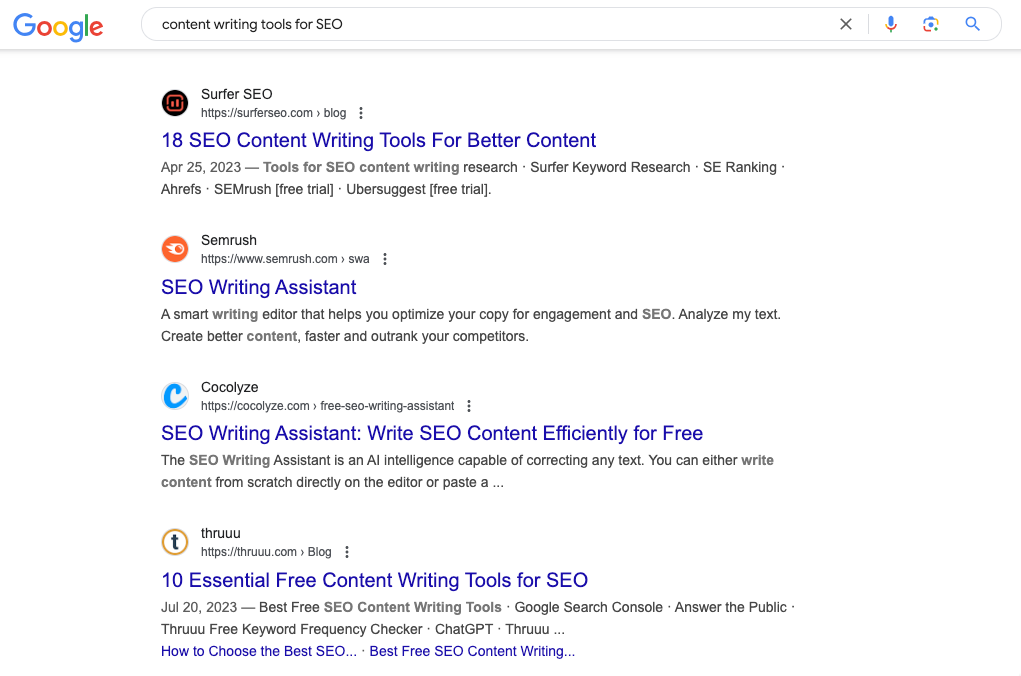
A differentiator in your title can make you stand out from your SERP competitors. More so, it increases your rankings for multiple keywords.
Here are a few recommendations:
- Use audience-specific phrases that allow you to target a focused audience.
Example: 5 Parenting Hacks → 5 Parenting Hacks for Busy Moms and Dads”
- Use words that convey trustworthiness or credibility.
Example: 5 Productivity Apps → 5 Productivity Apps Recommended by CEOs
- Focus on results
Example: 7 Weight Loss Tips → 7 Weight Loss Tips to Drop 10 Pounds Fast
Structuring Your Headings Effectively
List all the items you will cover in your listicle, number them accordingly, and use the right heading formats (H2s, H3s, H4s) for different headlines.
If your topic is how to complete a task, list the steps in the order in which they are completed.
See this listicle on how to make a smash cheeseburger.
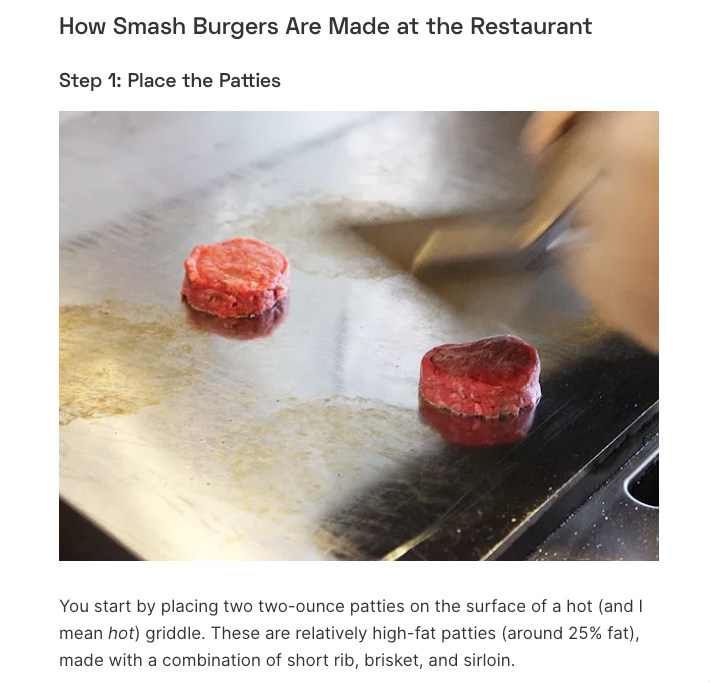
On the other hand, if your list doesn’t follow a standard order, ensure you write them in the order of relevance.
The most important items or points should come first, followed by the others.

If you are creating a best-of listicle, you can list your items according to their individual function, just as we did here:

Note: Aside from the list, your listicle can cover other sub-topics relevant to the readers.
For example, in our blog post on the Best SERP SEO Tools for 2025, we covered the types of SERP SEO tools and how to choose one before discussing our best SERP SEO tools.

Choose Long-tail Keywords for Sub-heading
Long-tail keywords are search queries that target specific audiences, closely match user search intent, and usually have less competition but higher conversion potential.
You should use long-tail keywords across your subheadings to increase your rankings for your target short-tail keywords and improve your content relevance.
Most importantly, voice search is becoming popular, and people are speaking in longer phrases. You can rank for those voice searches by optimizing your subheadings with relevant long-tail keywords.
Incorporate Relevant Visuals
Statistics show that articles with images receive 94% more views than those without.
Why?
No one wants to read a wall of text, numbered or bulleted.
Images make content visually appealing, enhancing readability.
You can use relevant visuals like images, GIFs, or infographics in your listicles to improve their engagement while breaking up text.
Backlinko uses this strategy well. Most of their listicles include several visuals that keep readers glued to their screens.
Their list post on the 17 Ways to Get More Views on YouTube has over 50 images—almost a sentence per image.
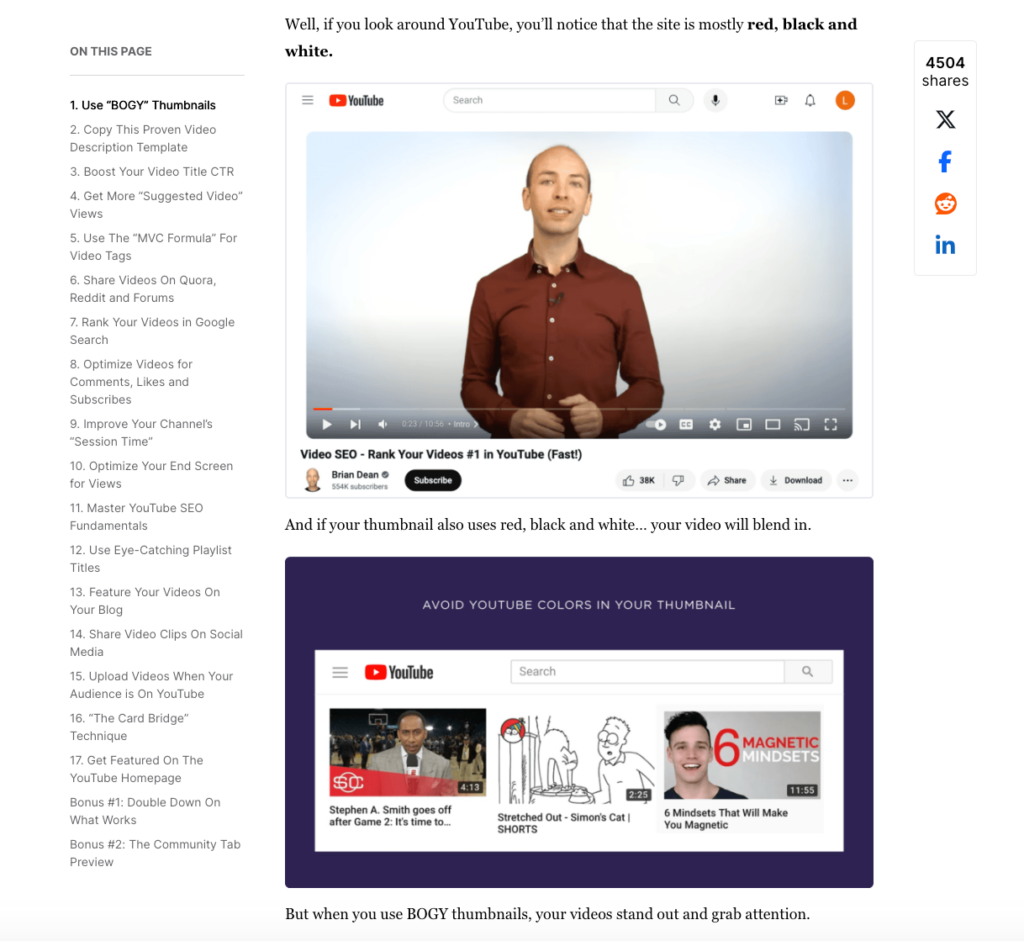
We also love visually-appealing listicles at thruuu.
Our article on the Top 5 Search Intent Tools has over 15 images with custom images to improve readability.
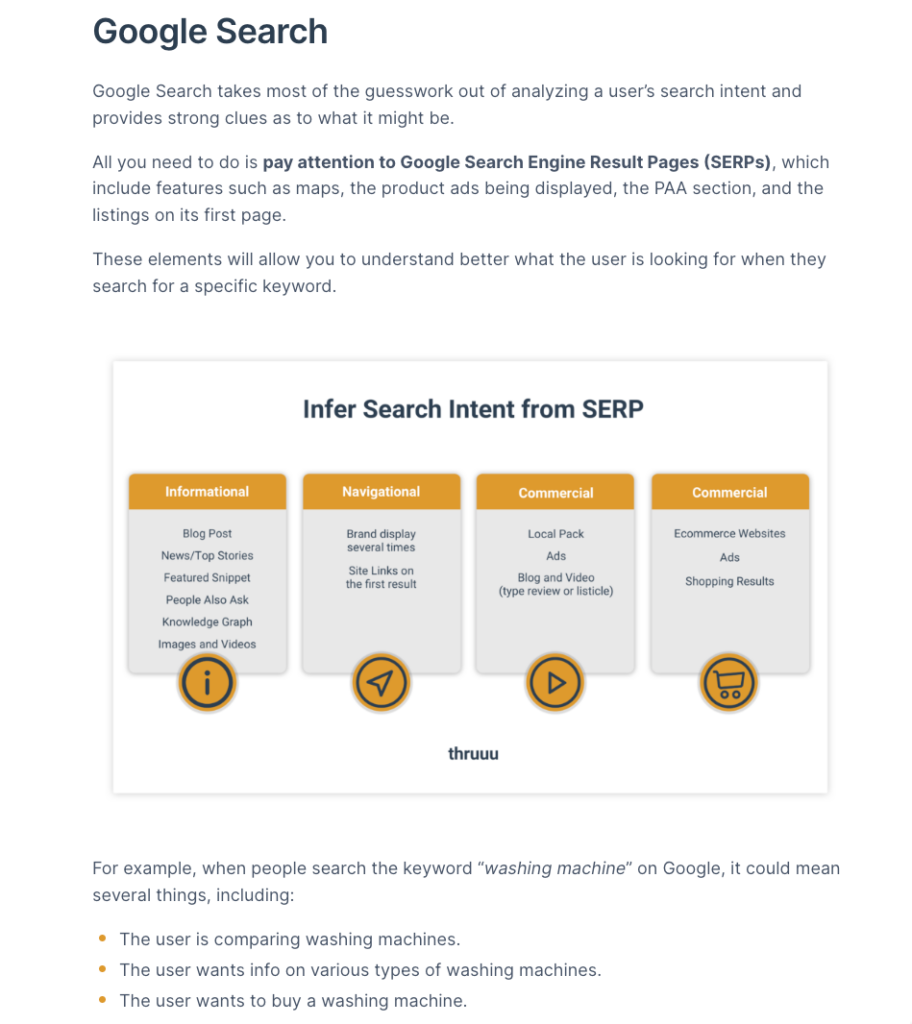
Understand that irrelevant visuals in your listicles can increase your page’s bounce rate, which means readers will leave.
If you are writing a best-of or comparison listicle, add the product’s picture or video.
You can also include images of the product’s usage. We implement this tactic in all our tool reviews.
This shows our readers that we have actually tried the tool.
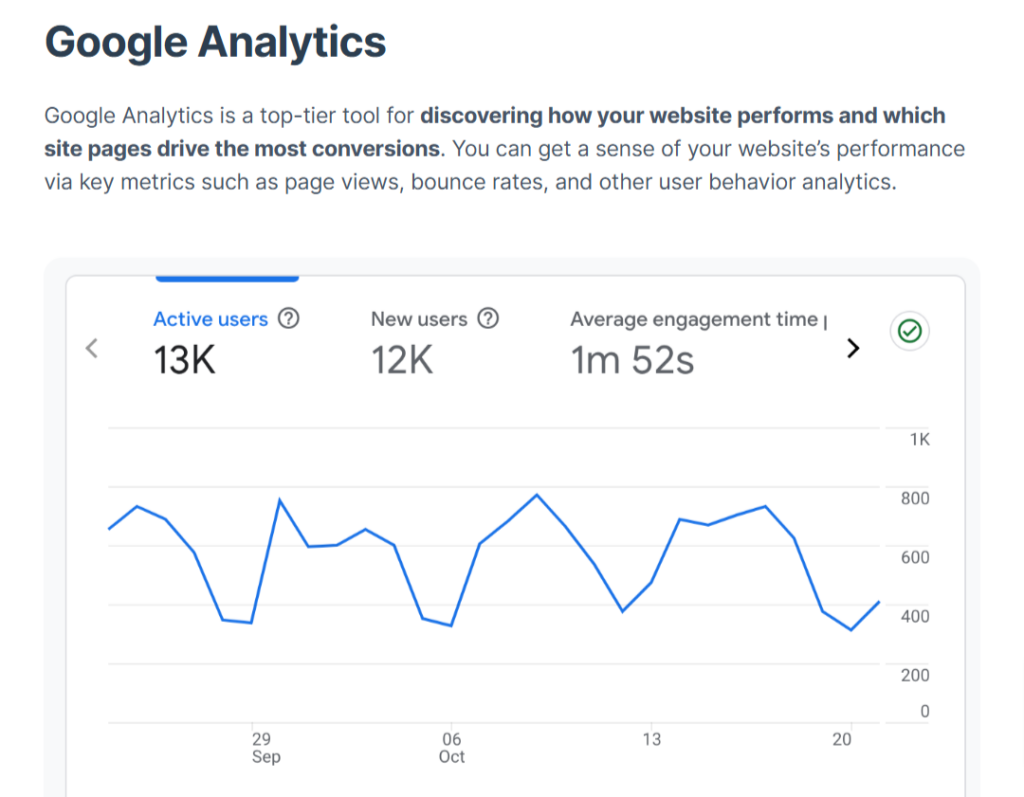
Pro tip: Avoid heavy images that can affect your page’s loading speed. Google recommends optimizing your images for fast loading speed.
Don’t Add Fluff
Understand your listicle topic search intent and let your outline cover exactly what the readers want to learn.
There should be no fluff headings because they bore readers. Your outline should be clear and concise yet detailed for high-level readability and engagement.
Add Unique Angles
Most listicles are short posts with little detail.
They aren’t bad because many people are in a hurry just to skim a list and get what they want.
But if you want your list post to build real estate on SERPs, we recommend including unique angles in your outline that are absent from the top 10 ranking pages on search results.
Here are some unique points to spice up your listicle outline:
- Actionable steps
- Real-life examples
- Actionable takeaways
- FAQs sections
- Quotes or expert opinions
As a unique angle, we will share some data about the performance of our own listicle to show you that it is a great format.
Analyzing Successful B2B Listicles
Let’s see some examples of our listicles and their performance over time.
We created a list post on the 13 free content optimization tools. The article ranks #3 on Google’s first page for its primary keyword.

It has generated thousands of impressions and hundreds of clicks…

And a 6% conversion rate

We created another listicle on the Best Keyword Clustering Tools. The article covers how to choose a keyword clustering tool, our best selections, and how to use the tool.
This listicle ranks #1 on Google’s first for its primary keyword, “best keyword clustering tools.”

It also ranks on the first page for 23 other keywords.
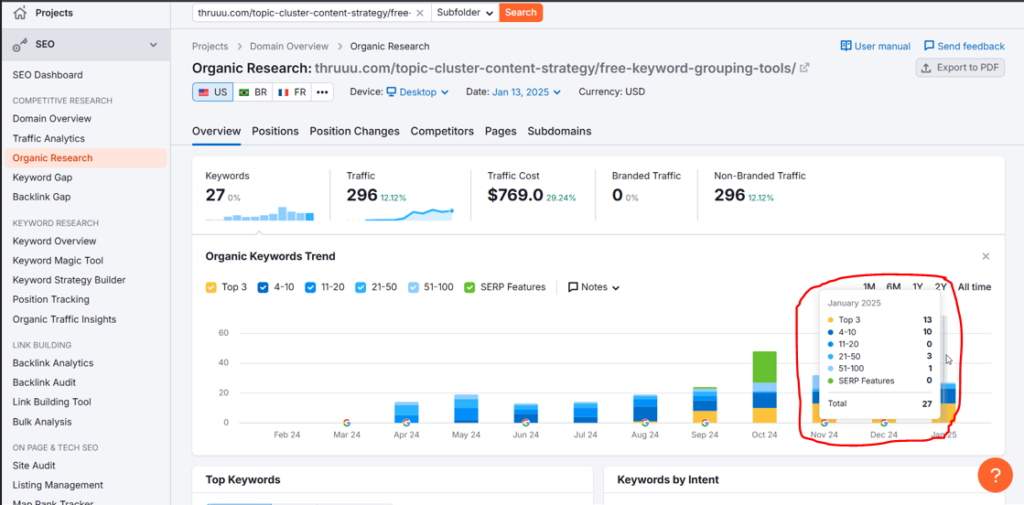
And generates hundreds of organic traffic monthly.
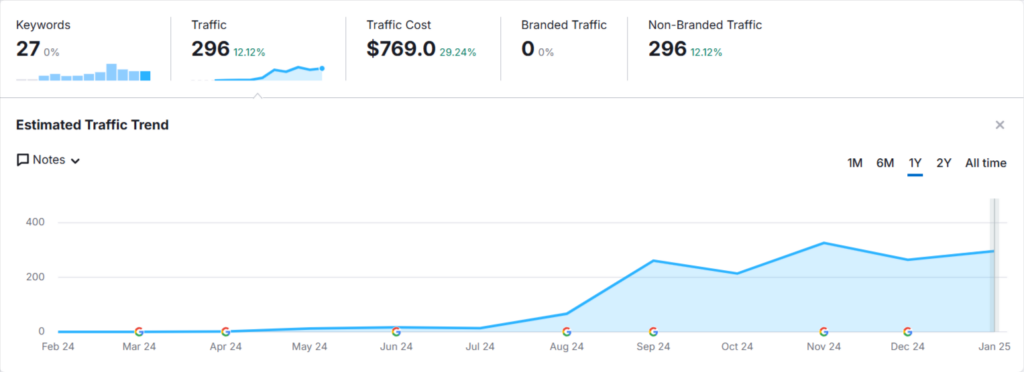
Beyond our great outline, more work is done behind the curtain responsible for these amazing results.
Read our B2B SaaS SEO strategy guide to learn the three result-guaranteed SaaS SEO strategies we’ve used to grow our SaaS business.
Listicle Templates and Examples to Consider for Your B2B or SaaS
Below is our comprehensive listicle template for our B2B SaaS blog.
We follow the best practices mentioned earlier and incorporate additional effective strategies, such as:
- Explain the Category and Criteria: Define the topic clearly and share how tools can selected and what feature must be considered.
- Analyze the SERP: Research popular tools to ensure the list is relevant and comprehensive.
- Be Honest: Provide balanced reviews, including pros and cons, for credibility.
- Include Your Tool: If applicable, highlight your tool’s unique value without overselling.
- Find a Unique Angle: Focus on a fresh perspective or niche use case to stand out.
- Add an FAQ: Answer common questions at the end to add value and provide internal linking opportunities.
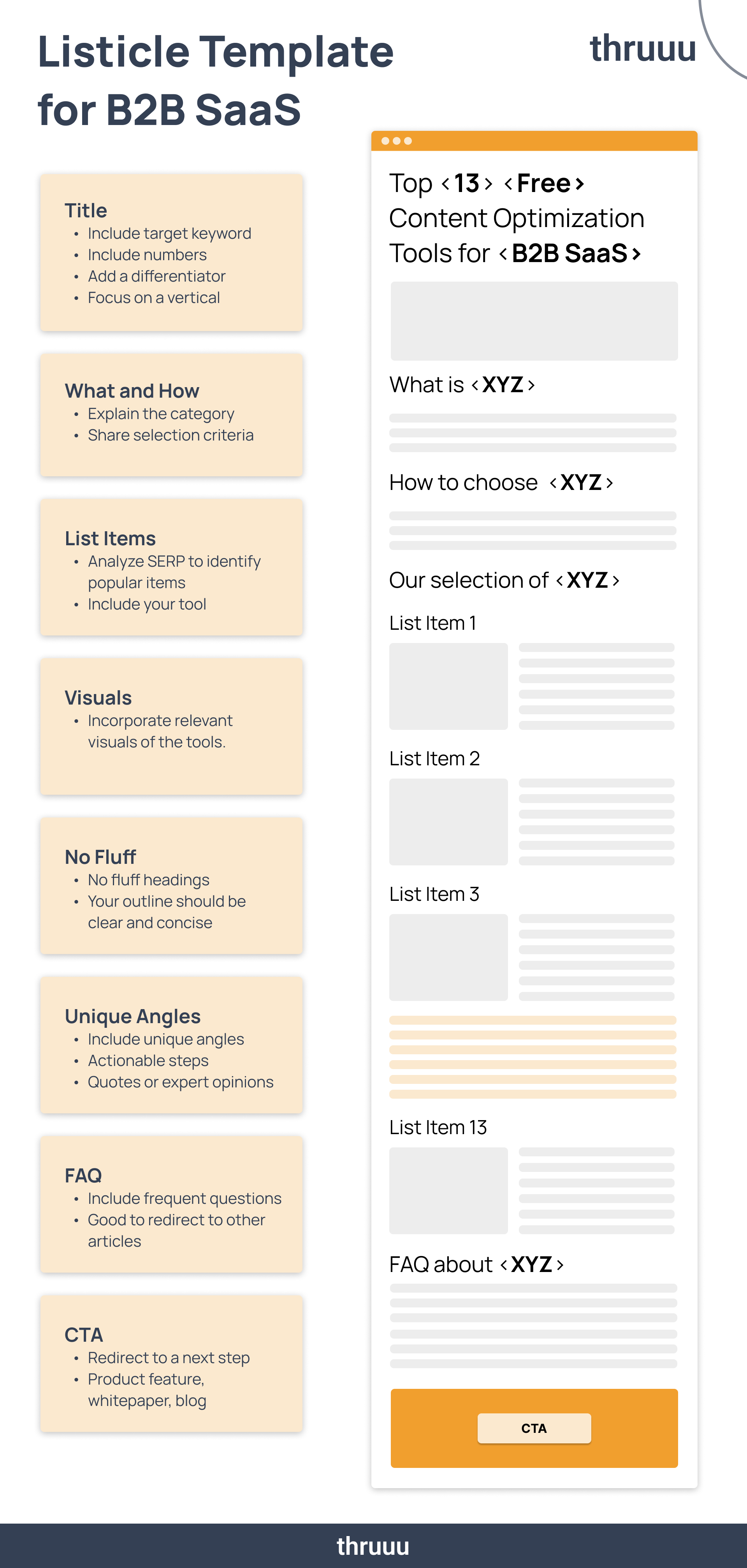
Let’s analyze some listicle templates and examples you can use to grow your SaaS business:
Product Reviews
A product review provides an overview of the top tools or products in a specific category relevant to the reader.
It compares products’ features, pricing, and benefits to help readers choose the right one.
Good Practice for Structuring:
- Introduction: Briefly explain the importance of the product category
- Explain how to choose the right product
- List Items:
- Name of the product/tool.
- A short description of its features, benefits, and uniqueness.
- Pros and cons.
- Pricing details.
- Conclusion: Include a recommendation based on specific use cases
Pro Tip: Use visuals like comparison tables or screenshots to make the content more engaging and easily understood.
Our review of the Best SEO Tools for Content Marketing perfectly explains how a product review should look like.
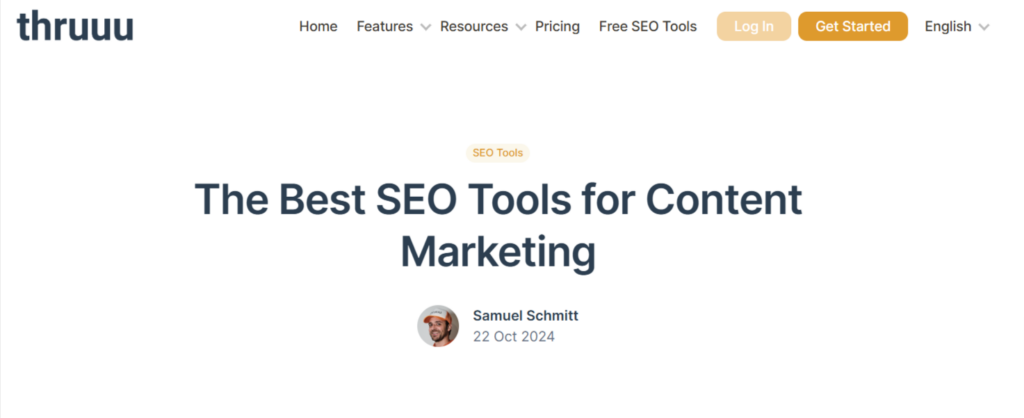
See its table of contents.

How-To Guides
A how-to guide provides step-by-step instructions to achieve a specific goal.
These listicles often include actionable tips for solving a problem efficiently.
Good Practice for Structuring:
- Introduction: Start by identifying the problem or goal the guide addresses and explain why it’s important.
- List Items:
- Step-by-Step Instructions
- Examples: Illustrate each step with real-life examples to make the guide relatable.
- Pro Tips: Add insider tips or warnings about common mistakes for each step.
- Conclusion: Summarize the key steps and include a CTA encouraging readers to apply the knowledge.
Examples:
- 10 Steps to Launch a SaaS Product Successfully
- How to Create an Effective SaaS SEO Content Strategy That Convert
Tips and Tricks
A tips and tricks listicle features practical, actionable advice to improve efficiency or solve specific challenges.
Good Practice for Structuring
- Introduction
- List Items:
- Clear and Actionable Tips
- Practical Examples
- Tools or Resources
- Conclusion
Example:
- 15 Tips and Tricks to Boost SaaS User Retention Rates
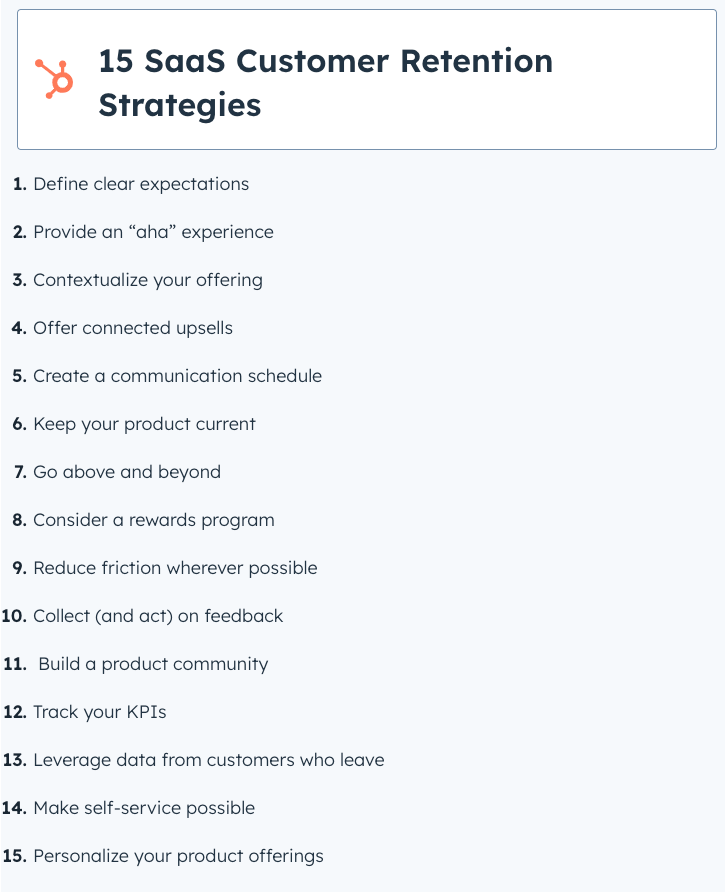
Best Practices
A best practice listicle features proven strategies, methods, or approaches.
Good Practice for Structuring:
- Introduction
- List Items:
- Detailed Practices
- Supporting Evidence: Back up each practice with real-life examples, case studies, or data to demonstrate its effectiveness.
- Conclusion
Examples:
- 8 Best Practices for Writing High-Converting SaaS Landing Pages
- 5 Best Practices for B2B Email Campaigns That Work
Comparisons
A comparison listicle evaluates and contrasts multiple tools, platforms, or strategies.
These listicles highlight key features, pros and cons, and best use cases.
Good Practice for Structuring:
- Introduction
- List Items:
- Side-by-Side Comparisons: For each option, provide:
- A brief overview of the product.
- Key features and benefits.
- Pros and cons.
- Pricing or plans.
- Best suited for (e.g., small teams, enterprise users).
- Comparison Tables: Summarize the differences in a visual table for easy reference.
- Side-by-Side Comparisons: For each option, provide:
- Conclusion: Offer recommendations based on specific needs
Pro Tip: Include screenshots or examples to give readers a better sense of the tools or strategies compared.
Examples:
- 8 Best Email Marketing Tools Compared: Which Is Right for Your Team?
- 5 Content Management Systems Compared for B2B Businesses
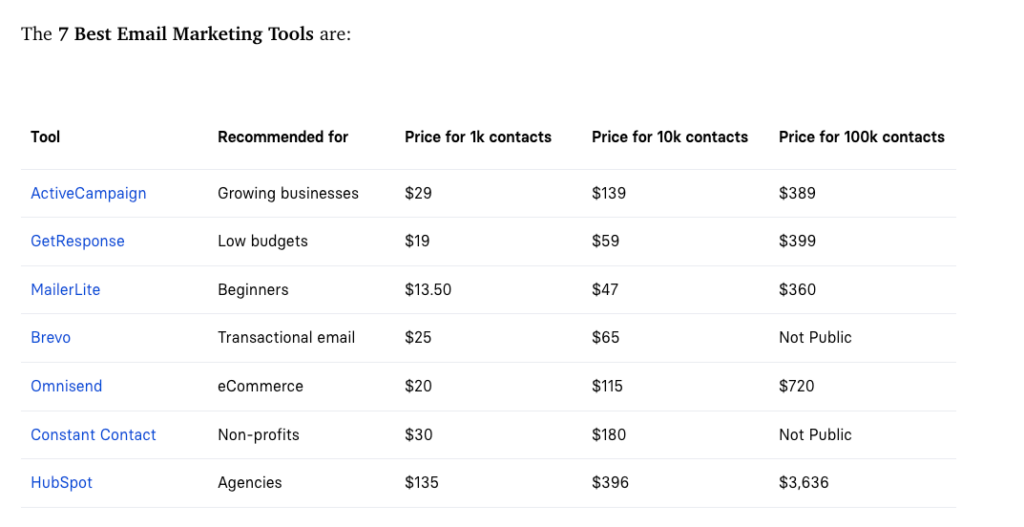
Case Studies and Examples
A case study in a listicle format shows how businesses or individuals achieved specific results using a product, service, or strategy.
Each case study review should include the company’s name, the problem it faced, the solution it implemented, and the results it achieved.
Examples
- 5 Examples of SaaS Startups Thriving in Niche Markets
- 10 B2B Companies That Nailed Their Brand Storytelling
Trends and Predictions
A listicle about trends and predictions covers emerging developments, innovations, or changes in a specific industry.
Each trend description should briefly explain the trend, its importance, and the supporting evidence.
Example:
- 10 SaaS Industry Predictions That Could Shape the Future
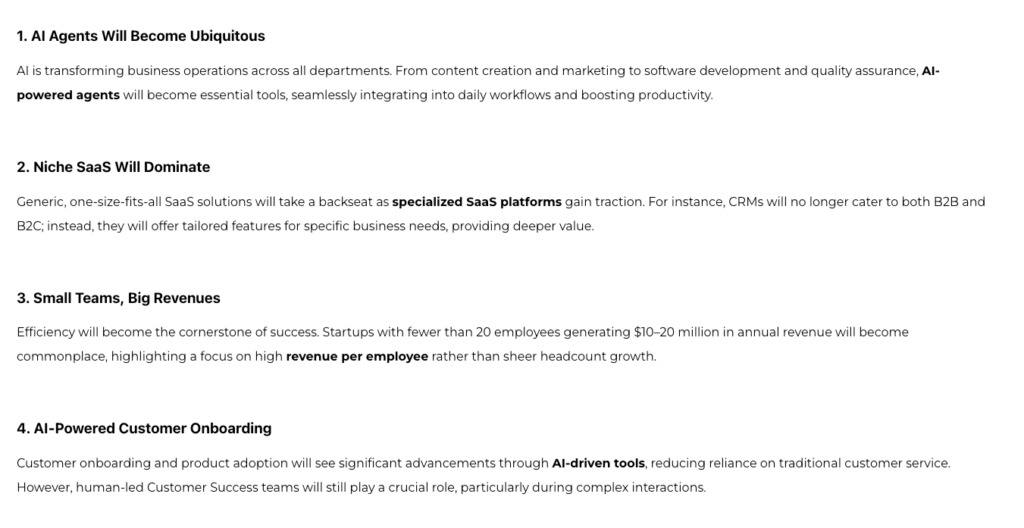
Problem-Solution Posts
A problem-solution listicle identifies common pain points or challenges and provides actionable solutions.
Good Practice for Structuring
Start by acknowledging the challenges faced by your audience and emphasize the importance of solving them effectively.
Then your list items should include:
- Problem Identification: Clearly describe each problem, why it occurs, and its potential impact.
- Solution Explanation: Offer practical, step-by-step solutions or strategies to address the problem.
- Tools or Resources
- Real-World Examples
Conclude with a final thought.
Pro Tip: Use subheadings like “The Problem” and “The Solution” within each list item to make it easier for readers to follow and understand.
Example:
- 7 Signs Your Team Needs a New Collaboration Tool (and What to Do About It)
Checklists
A checklist gives readers a comprehensive, step-by-step guide to efficiently completing a task or achieving a goal.
Your list of items should include the specific steps. Also, indicate which tasks are essential or optional for better task management.
Example:
- 10 Things to Check Before Launching Your B2B Campaign
- SEO Content Brief Checklist
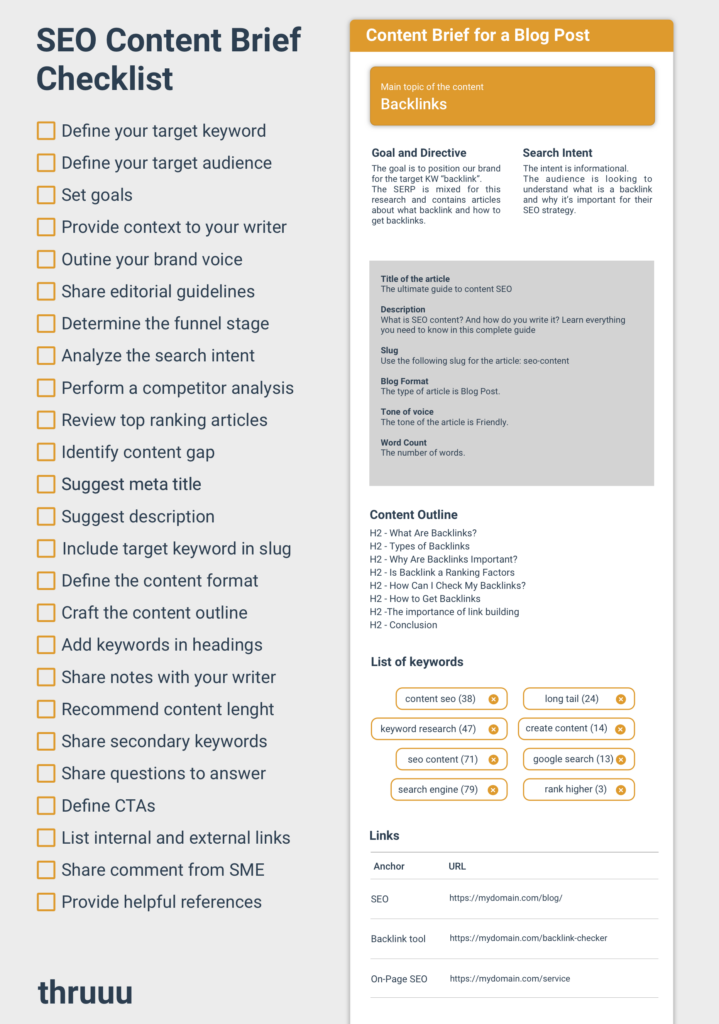
Pros and Cons
A pros and cons listicle evaluates the advantages and disadvantages of specific tools or strategies.
Your list items should include the pros and cons sections, a contextual insights section that provides examples for each pros and cons, and possibly a comparison table that summarizes the pros and cons.
Examples:
- 5 Pros and Cons of Using AI in SaaS Customer Support
- 10 Advantages and Disadvantages of Remote B2B Teams
Roundups
A roundup list post collects and showcases the best examples, tools, strategies, or expert opinions within a specific category.
The list item should feature a curated selection section briefly describing each tool, example, or opinion. If applicable, you can group items into categories for easier navigation (e.g., “Marketing Tools,” “Automation Tools”).
Examples:
- 10 Must-Read Blogs for SaaS Founders in 2025
- 7 Conferences Every B2B Marketer Should Attend This Year
FAQs or Common Questions
FAQ blog post are naturally listicles. They contain the most frequently asked questions about a specific topic, product, or service.
It should be in a question-and-answer format with proper numbering.
Examples:
- 7 Common Questions About SaaS Pricing Models (Answered)
- 10 FAQs About B2B Marketing Automation Tools
Step-by-Step Processes
A step-by-step process is a guide to completing a task or achieving a goal.
Each step should be presented logically with actionable details to guide the readers through each step.
Examples:
- 7 Steps to Successfully Launch Your SaaS Product
- 5 Steps to Optimize Your B2B Sales Funnel
Note: The structure prescribed for each listicle example isn’t a must-follow. You can be creative with yours by adding other relevant subheadings that match the search intent.
Best SEO Tool to Create Listicle Outline
thruuu is the Best SEO Tool for Creating Listicle Outlines.
Why?
Because thruuu offers a powerful content brief generator that helps you structure your outline in just a few clicks:
- The tool analyzes your competitors and extracts key on-page information.
- It structures your listicle based on your website’s best practices.
Below, you can see thruuu’s outline editor in action, organizing an article around tips.
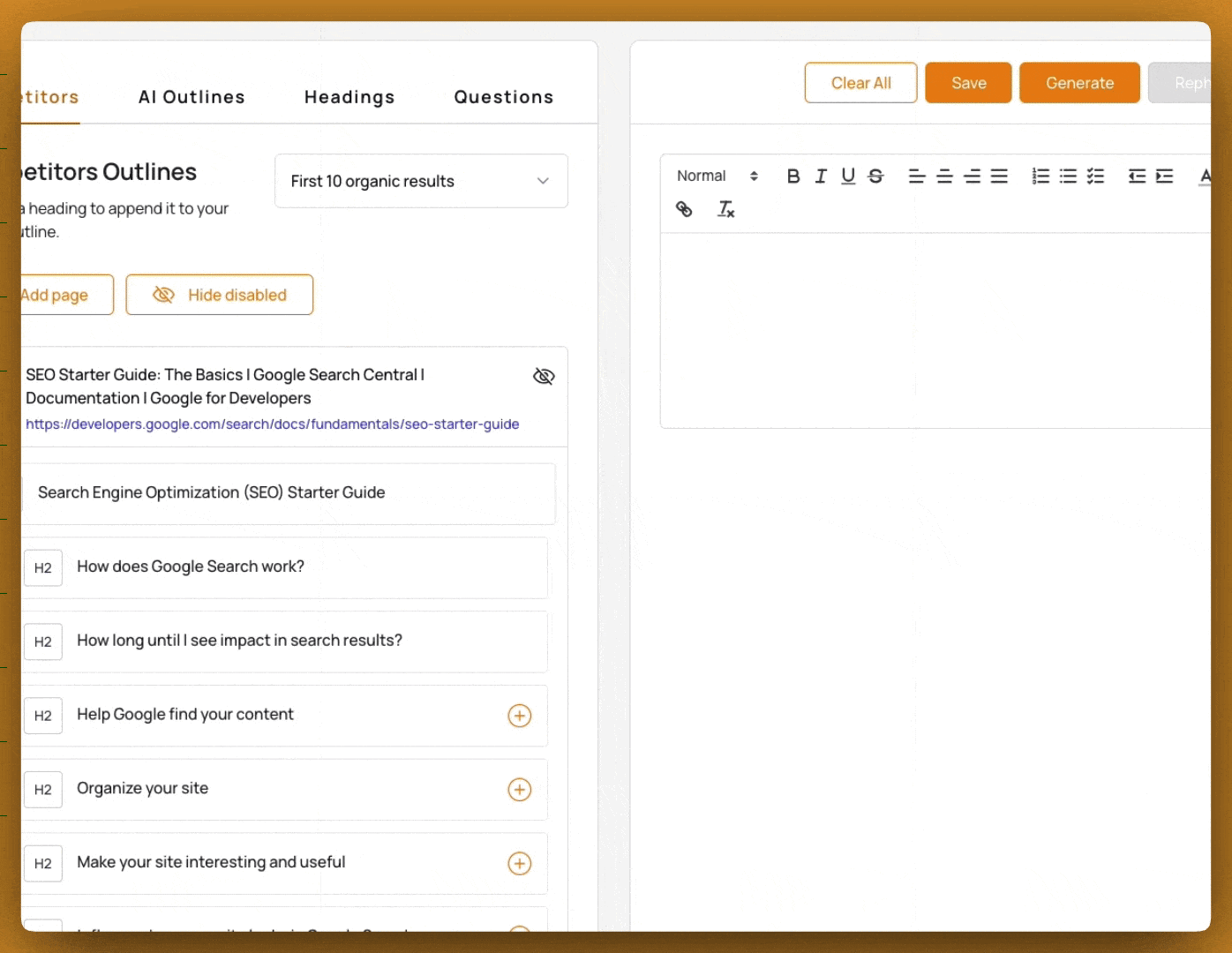
Here’s an example: thruuu generated a list of the best places to visit in New York City after analyzing competitors on the SERP.
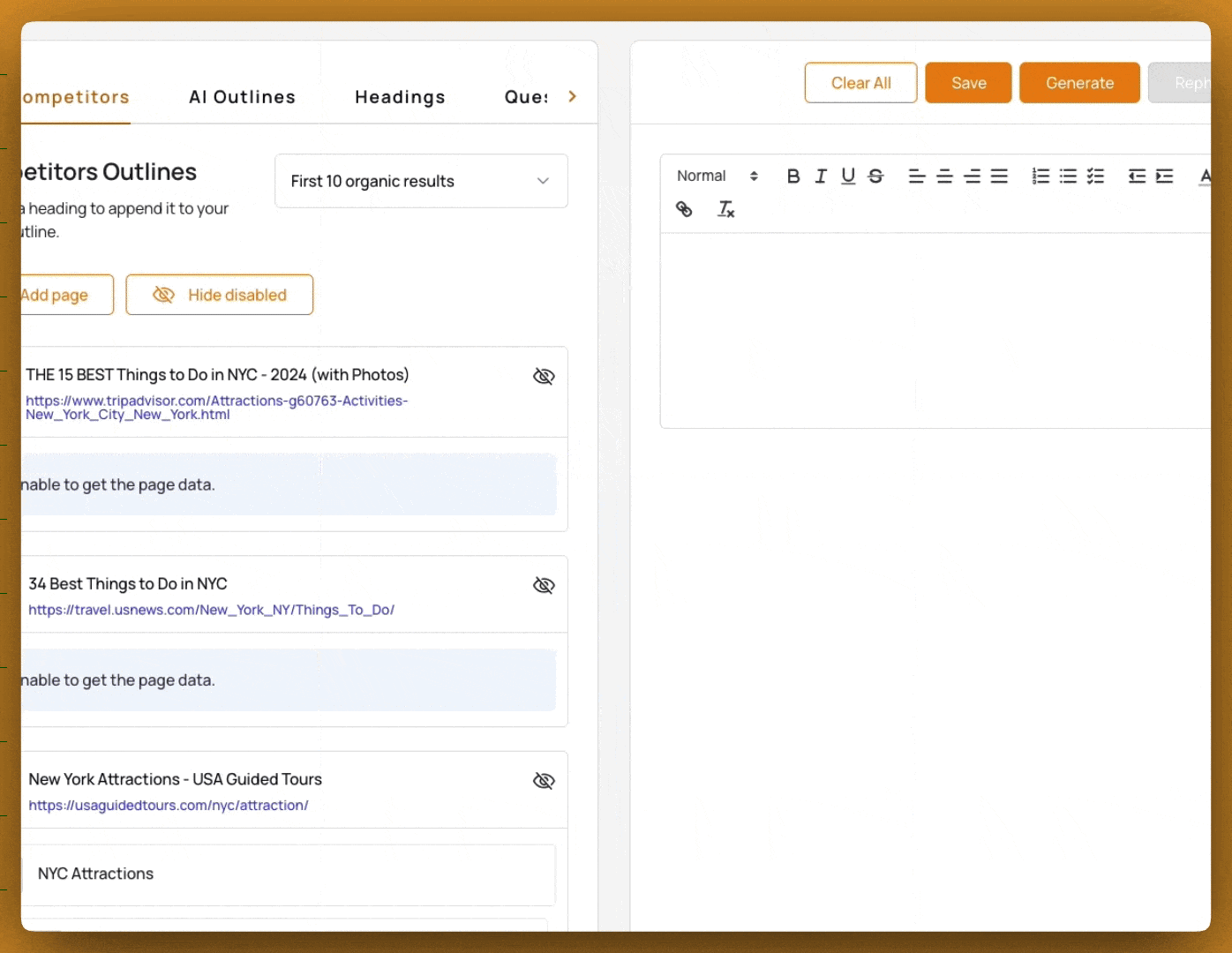
thruuu is a versatile tool for your content team.
Check out this video to learn how to create product reviews and listicles.
While this article focuses on listicles, the content brief generator can help you create any type of article and easily share it with your writers.
Discover more about thruuu and create your first content brief today!
Conclusion
Creating converting listicles isn’t rocket science. If your listicle outline is right, you have set the foundation for a list post that engages, ranks, and converts.
Implement all the listicle outline strategies discussed and prioritize creating helpful content that satisfies search intent.
In no time, you’ll create listicles that change readers’ responses from ‘Thanks for this” to “How do I sign up?”
Empower Your Content Team
Our end-to-end content optimization solution empowers your team to crack the Google algorithm, craft exceptional content, and achieve remarkable organic search results.
